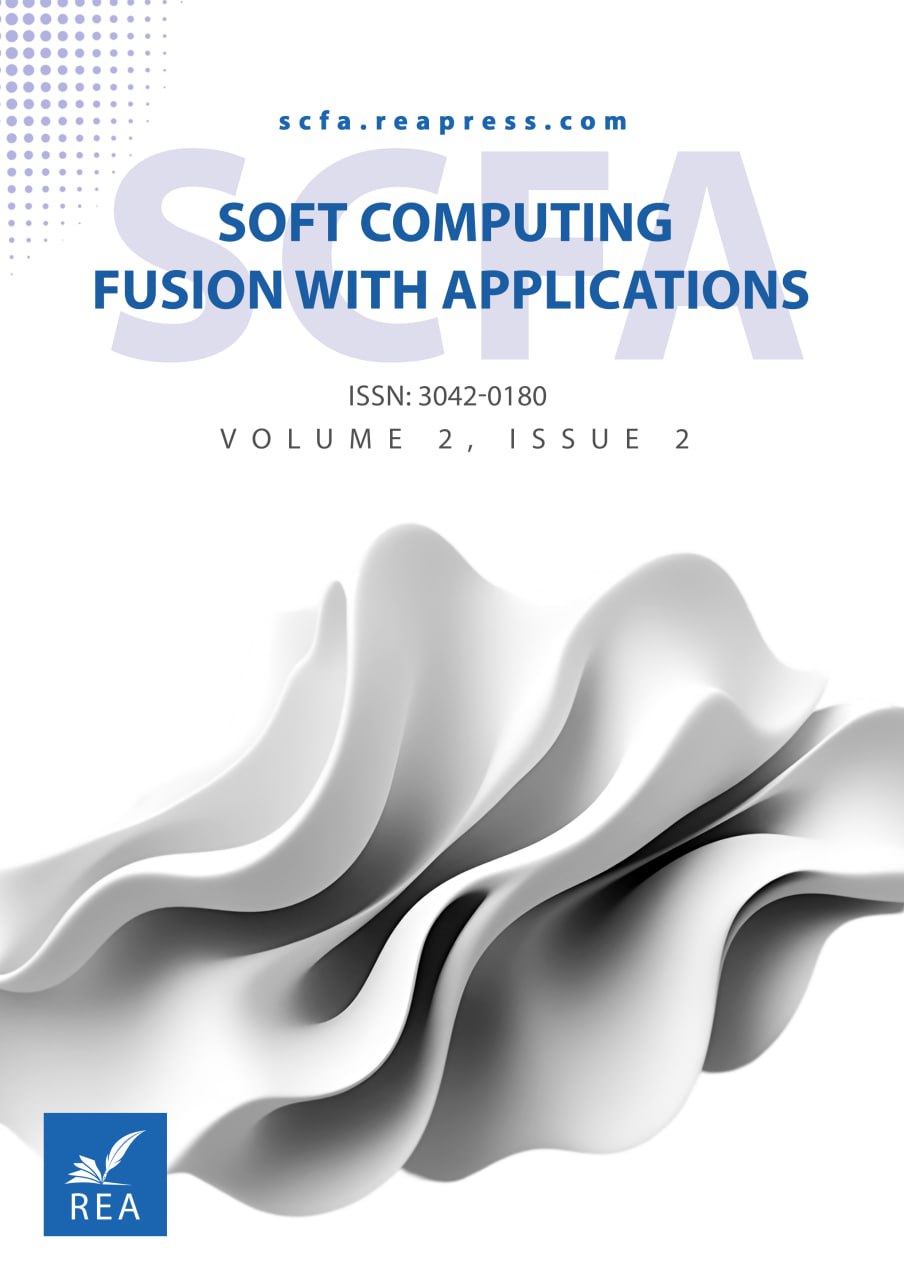Machine Learning and AI for Predictive Maintenance and Grid Integration of Wind Farms
Abstract
Increasing wind energy deployment necessitates intelligent, data-driven solutions to enhance operational reliability and optimize grid integration. This study develops and validates a novel Artificial Intelligence (AI)-driven framework integrating predictive maintenance with real-time grid optimization. By leveraging deep learning architectures (Convolutional Neural Network (CNN)-Long Short-Term Memory (LSTM)), Reinforcement Learning (RL), and hybrid optimization techniques (GeneticAlgorithms (GAs), swarm intelligence), the proposed system dynamically predicts turbine failures with up to 95.2% accuracy and enhances energy dispatch efficiency by 8.5. Unlike previous approaches, this framework incorporates federated learning for scalable model adaptation and Explainable Artificial Intelligence (XAI) techniques for improved interpretability, reducing false positives by 30%. Experimental validation uses Monte Carlo simulations and real-world sensor data from operational wind farms, demonstrating resilience against wind variability and grid instability. In addition, the integration of digital twin technology facilitates real-time AI-grid interactions, improving energy optimization by 15%. Key challenges, including data scarcity, model interpretability, and AI scalability, are critically examined. This research advances the state-of-the-art by bridging predictive maintenance, energy forecasting, and intelligent grid management, setting a foundation for next-generation AI-integrated wind farms.
Keywords:
Artificial intelligence, Predictive maintenance, Wind turbines, Grid integration, Machine learningReferences
- [1] Adeniran, A. O., Muraina, M. J., & Ngonadi, J. C. (2023). Energy consumption for transportation in sub-Saharan Africa. In Achieving net zero (Developments in corporate governance and responsibility) (pp. 203–231). Emerald Publishing Limited. https://doi.org/10.1108/S2043-052320230000020009
- [2] World Wind Energy Association. (2024). WWEA annual report 2023.
- [3] Barbosa, N. B., Nunes, D. D. G., Santos, A. Á. B., & Machado, B. A. S. (2023). Technological advances on fault diagnosis in wind turbines: A patent analysis. Applied sciences, 13(3), 1721. https://doi.org/10.3390/app13031721
- [4] Lee, M., & He, G. (2021). An empirical analysis of applications of artificial intelligence algorithms in wind power technology innovation during 1980-2017. Journal of cleaner production, 297, 126536. http://dx.doi.org/10.1016/j.jclepro.2021.126536
- [5] Wang, J., Cheng, L., Feng, L., Lin, K.-Y., Zhang, L., & Zhao, W. (2023). Tracking and predicting technological knowledge interactions between artificial intelligence and wind power: Multimethod patent analysis. Advanced engineering informatics, 58, 102177. https://doi.org/10.1016/j.aei.2023.102177
- [6] Farrar, N. O., Ali, M. H., & Dasgupta, D. (2023). Artificial intelligence and machine learning in grid-connected wind turbine control systems: A comprehensive review. Energies, 16(3), 1530. https://doi.org/10.3390/en16031530
- [7] Bošnjaković, M., Martinović, M., & Đokić, K. (2025). Application of artificial intelligence in wind power systems. Applied sciences, 15(5), 2443. https://doi.org/10.3390/app15052443
- [8] Udo, K., Ogundipe, P., & Ekechukwu, D. (2023). Optimizing wind energy systems using machine learning for predictive maintenance and efficiency enhancement. Computer science &IT research journal, 4(3), 386–397. http://dx.doi.org/10.51594/csitrj.v4i3.1398
- [9] Shakhovska, N., & Campos, J. (2024). Predictive maintenance for wind turbine bearings: An MLOps Approach with the DIAFS Machine Learning Model. SMARTINDUSTRY-2024.
- [10] Hamdan, A., Ibekwe, K., Ilojianya, V., Sonko, S., & Etukudoh, E. (2024). AI in renewable energy: A review of predictive maintenance and energy optimization. International journal of science and research archive, 11(1), 718–729. http://dx.doi.org/10.30574/ijsra.2024.11.1.0112
- [11] Zhang, W., Lin, Z., & Liu, X. (2022). Short-term offshore wind power forecasting - A hybrid model based on discrete wavelet transform (DWT), seasonal autoregressive integrated moving average (SARIMA), and deep-learning-based long short-term memory (LSTM). Renewable energy, 185, 611–628. https://doi.org/10.1016/j.renene.2021.12.100
- [12] Shi, J., Liu, Y., Li, Y., Liu, Y., Roux, G., Shi, L., & Fan, X. (2022). Wind speed forecasts of a mesoscale ensemble for large-scale wind farms in Northern China: Downscaling effect of global model forecasts. Energies, 15(3), 896. https://doi.org/10.3390/en15030896
- [13] Gorostidi, N., Nava, V., Aristondo, A., & Pardo, D. (2022). Predictive maintenance of floating offshore wind turbine mooring lines using deep neural networks. Journal of Physics: ConferenceSeries (pp. 12008). IOP Publishing. https://doi.org/10.1088/1742-6596/2257/1/012008
- [14] Hulwan, D. B., Chitra, S., Chokkalingan, A., Dixit, K. K., Subburam, S., Katarwar, V., & Tharmar, S. (2024). AI-based fault detection and predictive maintenance in wind power conversion systems. E3S web of conferences (pp. 2003). EDP Sciences. https://doi.org/10.1051/e3sconf/202459102003
- [15] IdeaUsher. (2025). AI agents for grid stability: Streamlining energy distribution. https://medium.com/@Idea_Usher/ai-agents-for-grid-stability-streamlining-energy-distribution-77ebe98b1e2d
- [16] Hanifi, S., Lotfian, S., Zare-Behtash, H., & Cammarano, A. (2022). Offshore wind power forecasting—a new hyperparameter optimisation algorithm for deep learning models. Energies, 15(19), 6919. https://doi.org/10.3390/en15196919
- [17] Pandit, R., Astolfi, D., Tang, A. M., & Infield, D. (2022). Sequential data-driven long-term weather forecasting models’ performance comparison for improving offshore operations and maintenance. Energies, 15(19), 7233. https://doi.org/10.3390/en15197233
- [18] Ilhan, A., Sergen, T., Mehmet, B., &Sahin, B. (2024). Machine learning approaches in predicting the wind power output and turbine rotational speed in a wind farm. Energy sources, part a: Recovery, utilization, and environmental effects, 46(1), 12085–12111. https://doi.org/10.1080/15567036.2024.2392890
- [19] Uhanto, U., Yandri, E., Hilmi, E., Saiful, R., & Hamja, N. (2024). Predictive maintenance with machine learning: A comparative analysis of wind turbines and PV power plants. Heca journal of applied sciences, 2(2), 87–98.
- [20] Samek, W., Wiegand, T., & Müller, K.R. (2017). Explainable artificial intelligence: Understanding, visualizing, and interpreting deep learning models. https://doi.org/10.48550/arXiv.1708.08296
- [21] Lu, B., Durocher, D. B., & Stemper, P. (2010). Predictive maintenance techniques. Industry applications magazine, IEEE, 15, 52–60. http://dx.doi.org/10.1109/MIAS.2009.934444
- [22] Bello, S., Wada, I., Ige, O., Chianumba, E., & Adebayo, S. (2024). AI-driven predictive maintenance and optimization of renewable energy systems for enhanced operational efficiency and longevity. International journal of science and research archive, 13(1), 2823–2837. http://dx.doi.org/10.30574/ijsra.2024.13.1.1992
- [23] Animasaun, A. B., Adeniran, A. O., Udorah, F. N., & Oluyemi, I. A. (2025). Optimization of wind turbine performance through advanced materials and design. Optimality, 2(1), 1-15. https://doi.org/10.22105/opt.v2i1.69


